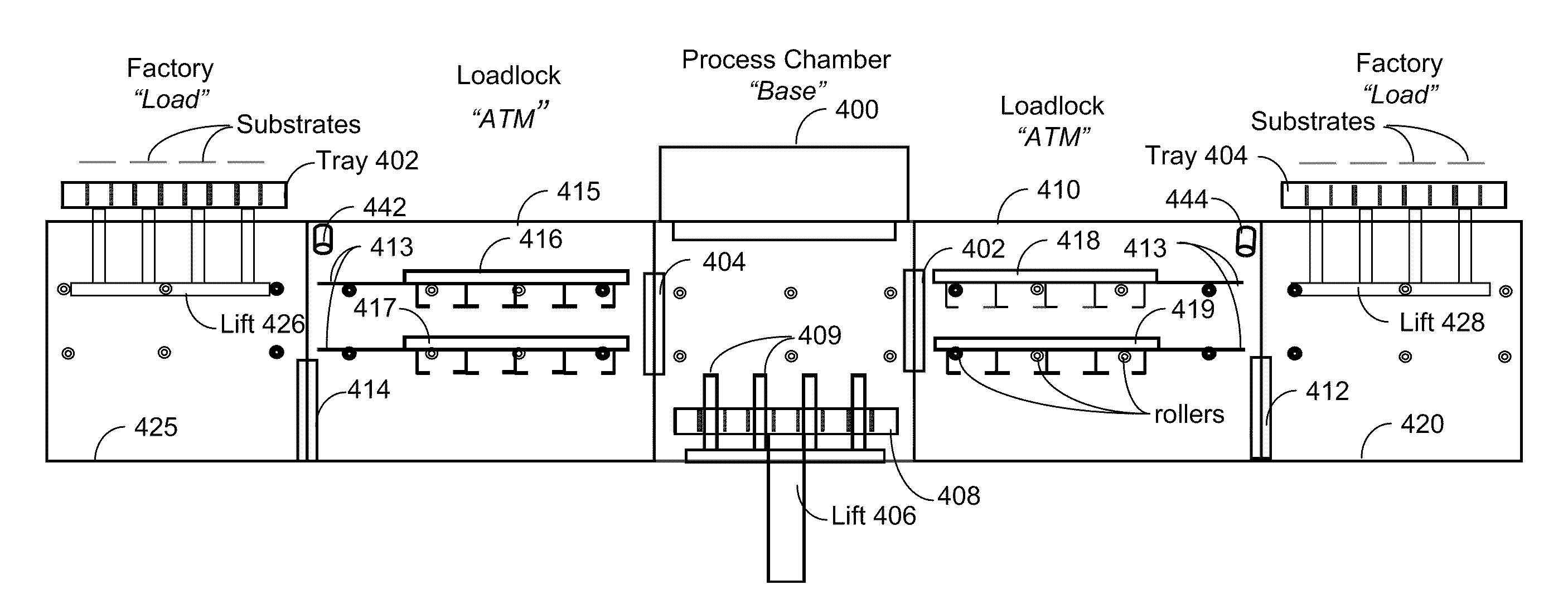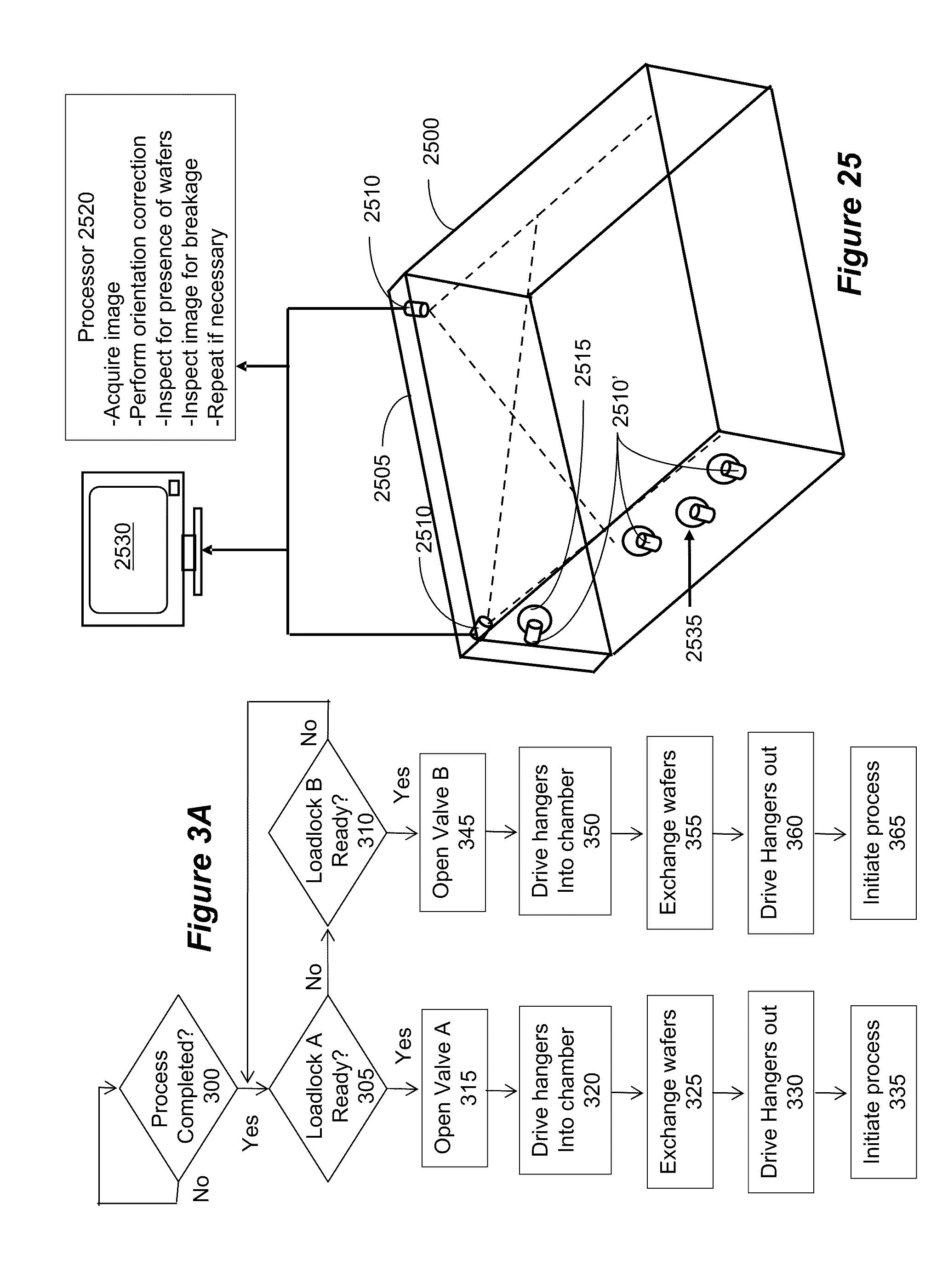Auto-sequencing inline processing apparatus
a processing apparatus and automatic sequence technology, applied in the field of system architecture, apparatus and method for processing substrates, can solve the problems of inability to use linear systems, complete system shutdown and inability to use, and inability to detect and recover broken substrates, etc., to achieve high throughput, high accuracy and throughput, and the effect of enabling detection and recovery of broken substrates
- Summary
- Abstract
- Description
- Claims
- Application Information
AI Technical Summary
Benefits of technology
Problems solved by technology
Method used
Image
Examples
Embodiment Construction
[0034]Various embodiments of the present invention provide apparatus and method for fabrication of substrates such as, e.g., for semiconductor integrated circuits, solar cells, flat panel displays, LED's and other applications. The system architecture is particularly beneficial for silicon-substrate solar cell fabrication and, therefore, for illustrative purpose will be described with reference to such application. The system sequences its transport of substrates and their fabrication autonomously, providing flexibility in feeding the system. This feature will be explained first in general terms with reference to FIGS. 1-3. More detailed explanation will follow further below.
[0035]In FIG. 1, a single processing chamber 100 is situated at the center of the linear system. In this embodiment, the processing chamber is a plasma processing chamber such as, for example, a PECVD processing chamber. One vacuum valve, 102, 104, is provided on each side of the chamber 100. A loadlock chamber ...
PUM
 Login to View More
Login to View More Abstract
Description
Claims
Application Information
 Login to View More
Login to View More - R&D
- Intellectual Property
- Life Sciences
- Materials
- Tech Scout
- Unparalleled Data Quality
- Higher Quality Content
- 60% Fewer Hallucinations
Browse by: Latest US Patents, China's latest patents, Technical Efficacy Thesaurus, Application Domain, Technology Topic, Popular Technical Reports.
© 2025 PatSnap. All rights reserved.Legal|Privacy policy|Modern Slavery Act Transparency Statement|Sitemap|About US| Contact US: help@patsnap.com



